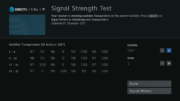Could it really be almost eight years?
I remember when I first started talking about what was then known as the HMC30 Home Media Center. It was designed to be a revolution in satellite TV watching. It was the first step, to be sure.
The HMC30, or HR34 as it was called later, was designed so that it didn’t work with other receivers in your home. It was only designed for client boxes. The plan was to radically overhaul the very idea of a satellite receiver.
The launch of HR34
Back in 2011 I was working for another site which produced this review of the HR34. It wasn’t called a Genie back then. By the time it launched, the DIRECTV brass had decided the world wasn’t ready for such a radical shakeup. While the HR34 would support the new client architecture (then called RVU) it would also let you share programming with other regular receivers and DVRs in the home.
HR34 was a neat idea back then, even though it would take almost a year (and a change of jobs for me) before the first client box was even released.
Enter… the Genie
In September of 2012 DIRECTV changed the name of its HR34 to Genie. I reported on that here. At the same time, they rolled out a feature called “Genie Recommends” which automatically recorded content that your viewing habits indicated you might like.
The Genie name seems to have been driven by DISH’s decision to rebrand its XiP813 DVR to be called “Hopper.” A successful ad campaign must have caught DIRECTV’s attention because the HR34 was quickly rebranded.
We’re now on our fourth generation of Genie hardware, and the latest, the HS17 Genie 2, finally fulfills the promise of a client-only household. With a Genie 2, you get 7 rooms of DIRECTV service and no ability to have other receivers or DVRs, just as was originally intended with the HMC30.
The Genie legacy
The Genie system did change DIRECTV. A Genie system eliminates almost all the little black boxes in your home. There’s no power inserter, no DECA, no Wireless Video Bridge. All those capabilities are built in. Every box other than the Genie server uses only a tiny bit of power. Genie Recommends morphed into a silent recommendations system that underpins the ads you get in the guide. It also quietly records on demand content you might like, so that content launches instantly for you.
I remember testing the HMC30 and even at launch, it had problems. It wasn’t perfect. DIRECTV (and later AT&T) engineers worked tirelessly. They created new hardware and new software. It took very little time before the Genie was bulletproof. Models HR44 and HR54 dropped power consumption and added style. Not only that, with the launch of 4K, Genie became a necessity. None of the other receivers do it.
As I write this, I’m looking over at an HS17. It’s been silently doing its job for quite some time now, and I’m glad to have had this long journey with Genie. It’s just amazing to me that it’s gone on this long.





